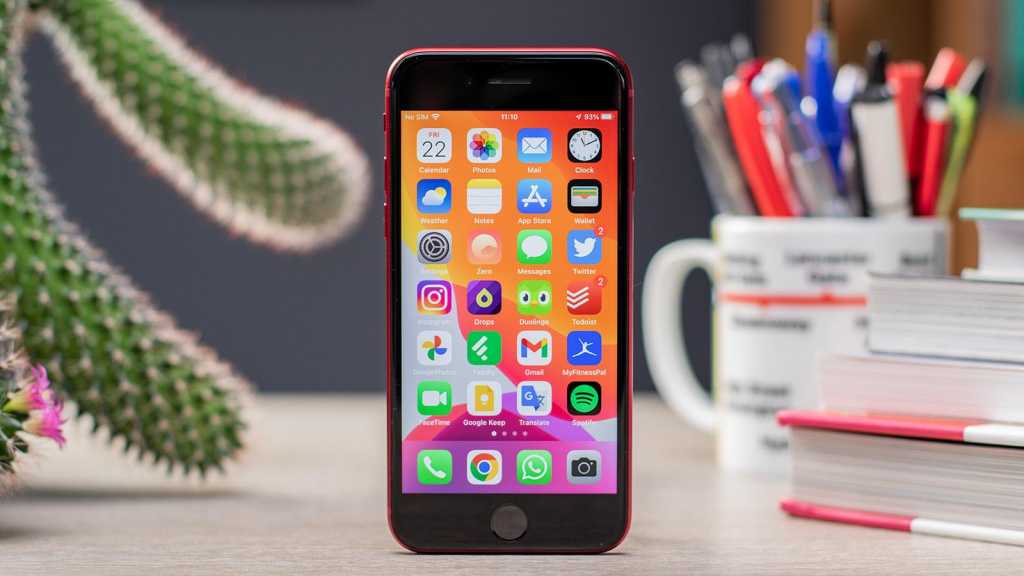| Term | Explanation |
|---|---|
| iPhone SE Replacement | Referring to the new model replacing iPhone SE |
| Apple Branding Strategy | Apple’s approach to naming and branding its products |
| iPhone 16E Introduction | Launch or unveiling of the new iPhone model |
| Marketing Rationale | Logic behind Apple’s marketing decisions |
| Product Naming Convention | Apple’s system for naming its products |
| Consumer Perception | How consumers perceive and react to the name change |
| Economic Positioning | Pricing strategy associated with the iPhone 16E |
| Entry-Level iPhone | Lower-tier iPhone aimed at budget-conscious consumers |
| Affordable iPhone Model | Cost-effective variant in the iPhone lineup |
| Innovation in Apple Products | New features or changes introduced by Apple |
| Apple Product Line Expansion | Growth or diversification of Apple’s product offerings |
| Apple’s Market Adaptation | How Apple adapts to market trends and consumer needs |
| Branding Shift | Transition in the branding strategy |
| Product Evolution | Development and enhancement of Apple’s product line |
| Apple’s Strategic Rebranding | Planned change in Apple’s brand image or identity |
| Apple Product Differentiation | Distinguishing features between Apple’s product lines |
| iPhone Series Variants | Different versions within the iPhone series |
| Market Segmentation Strategy | Dividing the market into distinct segments for targeted products |
| Consumer Electronics Branding | Branding tactics used in the consumer electronics industry |
| Apple’s Competitive Edge | Advantages that Apple holds over competitors |
| Technological Advancements | New tech features added to Apple products |
| Apple User Experience | The experience users have with Apple devices |
| Apple’s Product Launch Strategy | How Apple introduces new products to the market |
| Next-Generation iPhone | The latest or upcoming version of the iPhone |
| Apple’s Product Innovation Cycle | The process of innovation within Apple’s product lineup |
Why Apple’s Bizarre iPhone SE Name Change Actually Makes Sense
Introduction
Apple’s decision to rebrand the iPhone SE as the iPhone 16E has stirred up quite the discussion among tech enthusiasts and consumers alike. The change initially sparked skepticism and confusion, but upon deeper analysis, it becomes evident that there is a calculated strategy behind this move. Apple’s knack for marketing and branding innovation suggests that this shift is more than just a random alteration—it is a deliberate step to realign its product offerings with evolving market dynamics and consumer expectations.
The Evolution of Apple’s Naming Strategy
Over the years, Apple’s naming conventions have undergone significant transformations. Each iteration of the iPhone has been carefully named to convey certain attributes or technological advancements. From the iPhone 3GS denoting “Speed” to the iPhone 5c highlighting “Color,” Apple has often embedded subtle messages within its product names.
The iPhone SE, initially standing for “Special Edition,” symbolized a blend of old designs with updated internals. However, as the market matured and consumer expectations shifted, the “Special Edition” moniker started to lose its luster. This necessitated a fresh approach, leading to the introduction of the iPhone 16E.
Understanding the “E” in iPhone 16E
The letter “E” in iPhone 16E could potentially stand for several things—Economy, Entry-Level, or even Effective. Each of these interpretations aligns with the product’s positioning as a budget-friendly option within Apple’s broader iPhone lineup. By opting for “E,” Apple emphasizes affordability without directly labeling the product as “cheap,” which might undermine its perceived value.
The Rationale Behind the Name Change
Apple’s branding strategy is not just about naming; it’s about creating a narrative that resonates with its target audience. The transition from iPhone SE to iPhone 16E serves several purposes:
- Differentiation: It clearly distinguishes the new model from its predecessors, signaling that this is not just an iterative upgrade but a significant enhancement.
- Alignment with the Product Line: By integrating the “16” into the name, Apple aligns the iPhone 16E with the contemporary series, reinforcing its modernity and relevance.
- Market Positioning: The rebranding helps Apple position the iPhone 16E as an entry-level yet powerful device, appealing to cost-conscious consumers without sacrificing the brand’s premium image.
Consumer Perception and Market Adaptation
Initial reactions to the name change might include confusion or resistance, but history shows that Apple often anticipates and shapes consumer sentiment over time. The iPhone 16E’s branding is designed to adapt to market demands, where consumers seek affordable yet feature-rich smartphones.
Technological Advancements in iPhone 16E
Despite being an economical model, the iPhone 16E is expected to boast substantial technological advancements. Rumors suggest enhancements like the removal of the antiquated Home button, upgraded RAM and processors, and potentially Apple’s first 5G modem, which would elevate its performance and user experience.
The Strategic Rebranding of Apple Products
Apple’s decision to rename the iPhone SE is part of a broader strategic rebranding effort. This move helps Apple refresh its product lineup, making it more intuitive for consumers to understand where each device fits within the spectrum of offerings. By moving away from the “SE” branding, Apple signals a departure from the older, recycled designs, embracing a new era of product innovation.
Conclusion
The rebranding of the iPhone SE to iPhone 16E may initially seem perplexing, but it aligns with Apple’s history of strategic branding and market adaptation. This change not only differentiates the new model but also strengthens its positioning within Apple’s product hierarchy. As Apple continues to innovate and evolve, the iPhone 16E stands as a testament to the company’s ability to blend tradition with modernity, ensuring that its offerings remain relevant and appealing in a competitive market.
“Why Apple’s Bizarre iPhone SE Name Change Actually Makes Sense”
| Term | Definition |
|---|---|
| Apple iPhone SE | A line of iPhones designed as a more affordable option while retaining core features. |
| iPhone 16E | The rumored new name for the upcoming version of the iPhone SE. |
| iPhone naming strategy | Apple’s approach to branding and naming its iPhone models. |
| iPhone rumors | Speculations and unconfirmed reports about upcoming iPhone models. |
| Apple marketing tactics | Apple’s methods for promoting and positioning its products. |
| iPhone model changes | Updates and alterations in the series of iPhone releases. |
| Product rebranding | Changing the brand identity of an existing product. |
| iPhone SE series | A subcategory of iPhones that includes all models labeled as SE. |
| iPhone economy model | A more budget-friendly version of the iPhone. |
| Apple 5G modem | The modem developed by Apple for supporting 5G technology. |
| iPhone special features | Unique or standout specifications of a particular iPhone model. |
| Budget iPhone | A more affordable variant of the iPhone, designed for cost-conscious consumers. |
| Entry-level iPhone | An iPhone designed as an introductory model, typically less expensive than other versions. |
| iPhone 16 series | The lineup of iPhones that share the “16” series designation. |
| Apple branding decisions | The strategic choices Apple makes regarding the names and identities of its products. |
| iPhone SE evolution | The progression and changes in the design and features of the iPhone SE models over time. |
| iPhone 3GS | A previous model in the iPhone lineup, known for its focus on speed improvements. |
| iPhone 5c | An older iPhone model known for its colorful design options. |
| iPhone 16 lineup | The collection of iPhones released under the “16” branding. |
| iPhone upgrade cycle | The period in which new iPhone models are released and old ones are phased out. |
| Apple Intelligence | A term possibly referring to advanced AI features in Apple products. |
| Home button design | The physical button that has been a staple in older iPhone models, now being phased out. |
| Apple product lineup | The entire range of products offered by Apple, including various iPhone models. |
| iPhone redesign | Changes in the appearance and functionality of iPhone models over different generations. |
| Apple product launch | The event or series of events where Apple introduces new products to the public. |
Step 2: Article Writing – “Why Apple’s Bizarre iPhone SE Name Change Actually Makes Sense”
Major Shifts in the iPhone Landscape
Apple has always been known for its calculated and sometimes unconventional decisions. The latest ripple in the iPhone community is the anticipated renaming of the iPhone SE to the iPhone 16E. This unexpected move raises eyebrows but also invites curiosity about Apple’s marketing strategies and branding choices.
The Tradition of SE: A Look Back
The iPhone SE originally stood for “Special Edition,” a moniker that seemed fitting for a device that blended classic design with modern performance. However, with subsequent models, the “Special” aspect became less evident, diluting the brand’s essence.
Why iPhone 16E? Deciphering the Logic
The shift to iPhone 16E could signify a broader alignment with Apple’s flagship series. It suggests a product that, while still budget-friendly, is more integrated into the mainstream lineup, shedding the notion of being just a secondary option.
Marketing Mastery: Apple’s Strategic Moves
Apple’s marketing prowess cannot be understated. Every name change, feature tweak, or product launch is part of a meticulously crafted narrative. The introduction of the iPhone 16E likely aims to create a clearer distinction from its predecessors, emphasizing the enhanced features and performance upgrades.
Speculations and Expectations
Rumors hint at substantial upgrades for the upcoming model, including the potential debut of an Apple 5G modem. Such enhancements justify the need for a fresh identity, steering consumer perception towards a more premium yet accessible device.
Redefining Budget with Excellence
The “E” in iPhone 16E could stand for “Economy” or “Entry-level,” highlighting its affordability. Yet, it might also represent “Excellence” or “Effective,” pointing to the device’s superior specs compared to its predecessors.
Aligning with the iPhone 16 Series
Positioning the iPhone 16E alongside the iPhone 16 series streamlines Apple’s product lineup. It mitigates confusion, making it easier for consumers to identify and select products based on the series and performance level.
A Farewell to the Home Button
With advancements in Apple Intelligence, the antiquated Home button design is expected to be replaced, bringing the SE in line with modern iPhones’ aesthetics and functionality.
Consumer Perception and Market Reception
While the initial reaction to such changes may be mixed, Apple’s track record suggests that the market will eventually embrace the new model. The rebranding strategy could ultimately strengthen Apple’s position in the budget smartphone sector.
Conclusion
The renaming of the iPhone SE to iPhone 16E might seem bizarre at first glance, but it aligns with Apple’s strategic approach to product evolution. It reflects a balance between innovation and consistency, ensuring that even the most economical option within the iPhone lineup carries the brand’s hallmark of quality and forward-thinking design.
Why Apple’s Bizarre iPhone SE Name Change Actually Makes Sense
Major tremors in the iPhone rumorsphere last week, with the news that Apple is planning a name change for the next version of the iPhone SE. Goodbye, iPhone SE; hello, iPhone 16E.
Here at Macworld, our instinct when we hear reports like this is to respond first with skepticism and second with anger. It’s probably not going to happen, we mutter, and if it does, then we’re going to get mad. Why would Apple change a perfectly good and widely recognized brand in favor of one that is unfamiliar and, let’s be honest, quite confusing? Does there really need to be five models in the 16-series iPhone range? And can’t we leave the “incomprehensible series of numbers and letters” branding to the Android side of the aisle?
But after the skepticism and the anger comes curiosity. Apple knows its marketing, so there must be some kind of logic here. What’s the rationale?
Understanding Apple’s Naming Strategy
Apple has a history of imbuing its product names with meaning, even if it’s not immediately apparent. The SE in iPhone SE stood for Special Edition. The “E” in 2002’s eMac stood for Education, as it was marketed primarily to students and teachers. Similarly, the “C” in iPhone 5c stood for Color, while the “S” has stood for Speed, Siri, Security, and more in various models.
The upcoming iPhone SE’s transition to “iPhone 16E” may initially seem perplexing, but understanding Apple’s pattern helps.
Potential Meanings of “E” in iPhone 16E
- Economy: Given the SE’s role as a budget-friendly alternative, “E” could symbolize Economy, indicating a more affordable entry point into the iPhone ecosystem.
- Entry-Level: This interpretation highlights the device as a starting point in the iPhone lineup, appealing to new users or those seeking a cost-effective option.
- Excellent or Effective: Reflecting the improved specs and features that the new model is expected to offer, these interpretations suggest a focus on performance and user satisfaction.
The Evolution of iPhone SE to iPhone 16E
With the anticipated enhancements, such as the removal of the antiquated Home button design and upgrades in RAM and processor to support advanced features, the new model promises to be a significant leap forward. Apple’s own 5G modem could debut with this model, further distinguishing it from its predecessors and aligning it more closely with the mainline iPhone 16 series.
This transition underscores Apple’s intent to signal a departure from the less inspiring aspects of the previous SE generations. By rebranding to iPhone 16E, Apple is not only refreshing its marketing approach but also setting new expectations for what consumers can expect from this line.
The Marketing Genius Behind the Rebranding
Apple’s marketing strategy often involves creating a narrative around its products that resonates with consumers. The iPhone 16E name change is part of a broader effort to redefine the product’s identity, aligning it with the more advanced features and performance metrics typical of the iPhone 16 series.
This strategy can potentially capture a wider audience by framing the iPhone 16E as both a continuation of the SE legacy and a significant upgrade. The new name differentiates it from its predecessors while linking it to the main iPhone series, suggesting a balance between affordability and premium experience.
Consumer Reception and Market Impact
The decision to rename the iPhone SE to iPhone 16E could elicit mixed reactions from consumers. While some may appreciate the clear linkage to the flagship series, others might find the shift confusing. However, Apple’s track record indicates that it is adept at guiding consumer perception through strategic marketing.
The rebranding can also influence market dynamics by reinforcing Apple’s position in the mid-range smartphone segment. The iPhone 16E, with its anticipated feature set, may attract a segment of consumers who prioritize performance and design but are mindful of budget constraints.
Conclusion
Apple’s rebranding of the iPhone SE to iPhone 16E is a calculated move that reflects the company’s ongoing efforts to innovate while maintaining brand integrity. By choosing a name that signifies both continuity and evolution, Apple aims to reposition this product line within its broader ecosystem.
The iPhone 16E is poised to offer an exciting blend of economy, entry-level accessibility, and excellent performance. As Apple continues to fine-tune its marketing strategies, the success of this rebranding will depend on its ability to communicate these values effectively to its diverse consumer base.
Share via:




